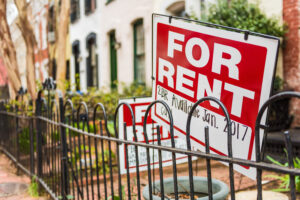After New York’s first micro-apartment building, Carmel Place, garnered over 60,000 rental applications early last year, whispers of the marketability and affordability of micro-units have rippled across the U.S. Among rising developments in Miami, Kansas City, and Queens, pro micro-apartment legislation in California has reached the senate level.
Under the existing law in California, cities and counties can permit the construction and occupancy of efficiency units (or micro-apartments) that have minimum of 150 square feet meeting specified criteria. AB 352 would prohibit cities and counties from establishing a higher square footage requirement and from limiting the number of units in certain locations near public transit, car-share vehicles or a University of California (UC) or California State University (CSU) college campus. Introduced by Assemblymember Miguel Santiago (D-Los Angeles), the bill aims to provide affordable housing in the form of micro-units.
What are Micro-Apartments?
Generally, micro-apartments are small, one-room living spaces that offer all the same amenities as a one-bedroom apartment (a kitchen, bathroom, etc.) but within a smaller square footage. Due to their limited size, the units are typically meant for one-person renters and special multi-purpose furniture is needed. In this 129 sq. ft. micro-apartment in Paris, for example, tenants wouldn’t be able to bring in their own sofa and coffee table. To be able to live comfortably within the compact space, they’d need a coffee table that doubles as a desk, dining room table, and can be easily stored and stashed away. The sofa would need to also function as a bed and be able to fit the room’s specific dimensions. Think of them as the Russian nesting doll of apartments; as one small and compact unit that can be transformed to fit whatever the renter needs.
Of course, not all micro-apartments are the same. Some designs, like the Kasita, are suited for single renters, while others, like Project Salva46, are made to fit couples and small families. These tiny apartments work with the space they have, and were originally well-designed renovations to a single unit or small space. Within the last few years, however, (rather than renovating a pre-existing building) developers have purposely created apartment communities that only have micro-units, the most notable being New York’s first micro-unit apartment, Carmel Place, which opened last year.
Betting on Minimalistic Millennials: The Next Generation’s Housing Needs
Part of this sudden interest in micro-apartment developments can be attributed to the rising trend of minimalism, which became prominent from 2014-2016. Marie Kondo’s New York Times #1 Best Seller, The Life-Changing Magic of Tidying Up: The Japanese Art of Decluttering and Organizing, helped contribute to the minimalist lifestyle boom by showcasing methods to cut down on material items, organize, and invest in products that truly make the buyer happy. While not all millennials (ages 18-34, also known as Generation Y) subscribe to a minimalist lifestyle (or are attracted to minimalist design and marketing), the aspects of cutting down and budgeting can seem especially attractive to those burdened with student debt.
According to The Institute for College Access & Success, “7 in 10 seniors (68%) who have graduated from public and nonpropfit colleges in 2015 had student loan debt, with an average of $30,100 per borrower.” With about 20.5 million students attending American colleges and universities in the fall of 2016 (constituting an increase of about 5.2 million since the fall of 2000), an increasingly large percentage of millennials are likely to be interested in affordable and minimalistic micro-apartments.
New York’s Carmel Place isn’t the only one making waves with micro-apartments. Groundbreaking on a micro-apartment in Miami, Florida is scheduled for this July and a micro-unit development is seeking approval in Kansas City, Missouri. Even New York is already getting a second micro-apartment building in Queens! If AB 352 passes, it is likely that there will be an uptick of micro-apartment buildings near universities and public transportation in California as well.
The Reality of Living in a Micro-Apartment Unit
Let’s face it— there’s no such thing as a perfect apartment building. Every rental property has challenges, and micro-apartments are no exception. As Resident Screening Blog mentions, critics have pointed out three main weaknesses to the micro-apartment life.
- Lonely Renters
With designs like the Kasita, a micro-apartment complex inspired by shipping crates, critics argue that small apartment living will make tenants feel isolated and lonely, thus creating a high turnover rate. If AB 352 passes, developments near schools will be in direct competition with student housing, which facilitate renter relationships with tenant events and community areas. In order to attract college student tenants and young professionals, micro-apartments will either need to design the units in a way that promotes communication between tenants or invest time and money into community-building event and amenities.
2. Starting a Family
So far, most micro-unit apartment communities have been designed to fit single-person renters. In Dan Tomita’s words, a tenant of Carmel Place, “the end all is always to have more space.” Micro-apartments fill the need for affordable single-renter housing, but that need is temporary. Eventually a renter will want to start a family or move into a larger space. While micro-units for small families have been built from pre-existing apartments, this typically involves a larger square footage, eliminating the affordability of the unit. While micro-apartments are affordable by nature, their inability to house more than one person per unit means that they are not the “cure-all” for the affordable housing crisis (much to politicians’ chagrin).
3. Affordability
While the square footage of micro-apartments will make the units more affordable, the necessity of custom built furniture and community spaces will naturally increase the price. In fact, the New York Post initially criticized that Carmel Place (at $97 a square foot per year) was not affordable in comparison to an 808 sq. ft. one-bedroom, 1.5 bathroom apartment in a ritzy Metropolitan area (at $54 a square foot per year). If micro-apartment buildings expect to attract college students and money-conscious, young professionals, affordability is key. As luxury apartments are meeting a slow decline this year, extra amenities will not sway a single-person renter with student loans.
Although these challenges are certainly formidable, they aren’t impossible to conquer, and as you can see from Carmel Place’s 60,000 applications, the market is there. As of late last year, Millennials surpassed the Baby Boomer generation as America’s largest generation. On top of that, millennials already consist of 56% of the renter population, the largest segment of renters. Regardless of whether micro-units become the new millennial craze or not, landlords and real estate agents across the nation will need to learn how to cater to the needs of the millennial renter.
Do you think micro-apartments will go far, or is it just a fleeting trend? If micro-apartments blow up, do you think it will affect the type of applicants your rental property gets? Let us know in the comment section below & be sure to subscribe!







